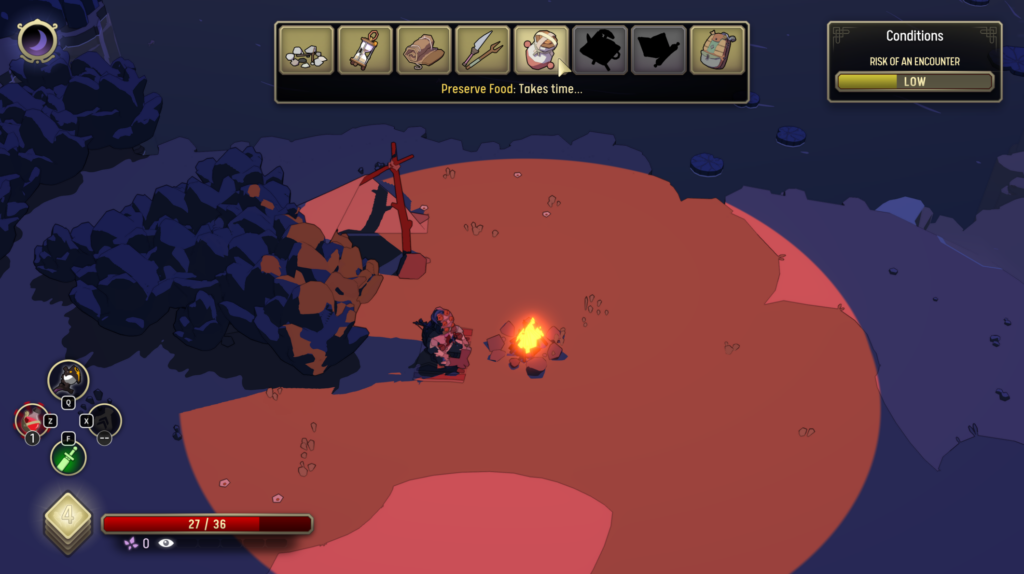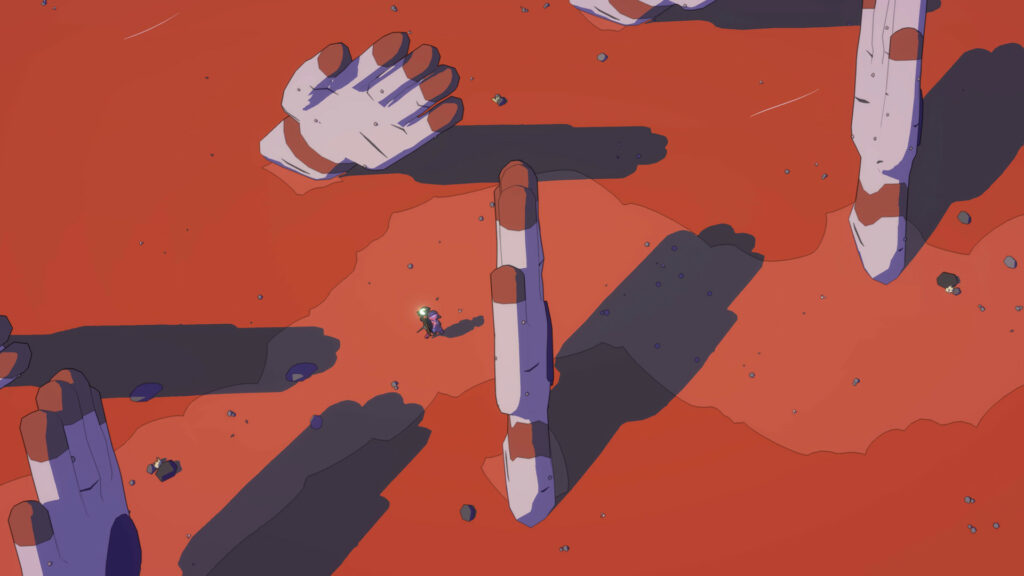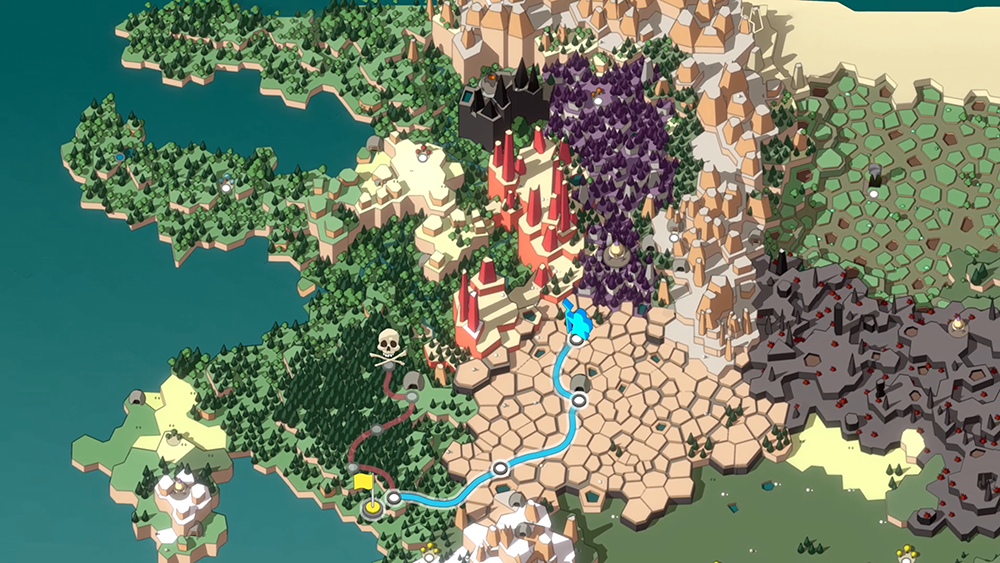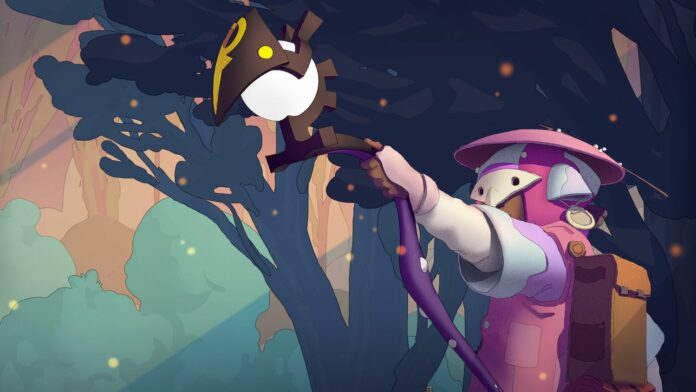Unexplored 2: The Wayfarer’s Legacy by Dutch developer Ludomotion is breaking quite a few conventions with their unique take on the RPG- and Roguelite-genres. The game is an RPG without XP and very little loot dropping. There is combat but sometimes it’s better to avoid fights. It plays like a Roguelite, but there is a way to cheat permadeath.
So what exactly is Unexplored 2? We talk to Game Director Joris Dormans about the breathtaking worlds that are procedurally generated each time you start a new game, that feel alive and coherent. And what’s the price you pay to cheat permadeath? Oh, and the quest to destroy the ‘Staff of Yendor’ feels a bit like a certain ring of a certain fantasy saga, doesn’t it?
You like to challenge yourself as a game designer it seems. The first Unexplored featured cyclic level generation. What innovative designs have you come up with this time around?
“For Unexplored 2 we try to be more radical about the use of content generation. Unexplored 1 followed the template of a dungeon crawler quite closely and the content generation reflects that. Now we are creating different types of locations in an open world setting. That means they have to feel much more like coherent places.
We’ve come up with a framework that I’ve dubbed the ‘Theory of the Place’. It outlines a structural framework we use to create locations like a lake-side tower hidden in a forest, a ruined keep perched on top of a cliff, or a magic lake hidden in a deep cavern. The logic used to generate these levels blends gameplay requirements (like we had in Unexplored 1) with a more ‘realistic’ architectural logic. On top of that we add layers of encounters to make sure these levels feel lived-in, although their current inhabitants might have moved in recently and are repurposing the level to their own ends.”
Roguelites are characterised by permadeath. You came up with a clever twist to that feature. How can players cheat death in Unexplored 2
“Our twist is that you can start as your own successor in the same world. It will be some years later and the world will have progressed slightly, but you can more or less pick-up where your previous character left off. Some items are ‘legacy items’ that carry over to the next run. So your next character is likely to be in a better position. There is a price to pay, however. As time advances so does the evil empire. Between runs they have slowly taken over the world, making it harder and harder to travel safely.
Ultimately this limits the number of runs that are possible in a world. At one point the empire will threaten the starting location. When that happens you only get one more shot at fulfilling the quest to destroy the staff of Yendor. If you fail, that world is lost and you have to generate a new one.
There are also other consequences, many things you do during a run transfer to the next run as well: friendships you forge, enemies you make, resources you take. There are a few moments in the game where you have to make choice which consequences will affect all future runs in the same world.”

The worlds are procedurally generated each time you start a new game. What are the rules you use to make worlds feel cohesive and alive?
“We have a ‘top-down’ approach to content generation: we generate sketches and outlines first and fill in the details later. So when we generate a world we start with a plan for a number of regions and a rough idea where they need to go. Next, we can add more detailed requirements for each region: it must house a number of specific locations, certain types of enemies live there, and so on. Only then the levels are generated in detail, and only when you actually travel there.
The advantage of this approach is that we can foreshadow many things even though the levels themselves are not generated yet. We know to what requirements they’re generated. That foreshadowing is crucial to create coherence. Combined with the simulative nature of the world where multiple factions can claim locations and where the empire is slowly winning a game of ‘Civ’ it makes the world come alive.”
How do you progress and level up your character?
“There are two main ways to get ahead: getting better gear, and learning skills. A good reason to go exploring is to find magic equipment and to uncover magic sigils. These sigils allow you to improve certain ‘well-made’ items such as swords, shields and armor. But also staves and magic rings. Having access to these items is going to be a big help.
You learn skills as a reward for accomplishing deeds. From time to time you are offered a challenge, such as uncovering a treasure, locate a resource, or deal with an enemy. If you complete that challenge you get a deed and you are awarded a choice of skills that is appropriate for the type of challenge.
There is also a third, more subtle avenue for progression: your actions change the world and that can have an effect on the current run and all runs that follow. You can make friends with other clans, and that will allow you access to different character backgrounds for the next runs. Or you can bring gifts to those clans that unlock more backgrounds, or better starting skills.By waking magical elemental beings they will affect magic associated with them. You can power down or power up ancient magic machines that will have a drastic effect on the end game. Basically you want to try to get the world into a state where you have the best chance to win the game. Before it is too late.”

The game has made quite a dramatic graphical leap compared to the first one. What (and who) made this upgrade possible?
“Hendrik Visser is responsible for the new look. He’s an artist I worked with in the past, but who wasn’t involved in the first game. Based on the success of Unexplored 1 our publisher (Big Sugar) was willing to invest in the team and that made it all possible. Although when we set out we weren’t quite as ambitious. We thought we were going to make the game in 2 years, and it would still be 2D. That changed into 5 years and 3D. For all of us it was the first 3D game we’ve made, so we had to learn a lot of things.
In part the visual style is the result of our ignorance: we had no idea how to set these things up and the things we ended up with are very unconventional. For example: we have a system that swaps out the palette for shadows. Basically we can make our shadows anything we like: they can be lighter, red, or grayscale. We use it to give the shadows a very distinctive feel for different times of day. It might not be something you immediately notice, but it gives the game a character you can feel.
Later Rosa Corstjens joined the team. She set up the shader that renders the nice thin outlines. Those outlines are also crucial to the look we were after. She spent a lot of time going over the details of the shader with Hendrik and that effort is also essential for the way the game currently looks.”

What is the most unique feature of the game and what are you most proud of?
“Personally I feel that Unexplored 2 really captures an essence of table-top RPGs that is left rather ‘unexplored’ by most RPGs played on a computer. We’ve really tried to make the sense of adventure the core experience of the game. You’ll spend a lot of time traveling and exploring. It incorporates the best aspects of a well-run ‘hex-crawl’. I recall watching it on an Early Access stream and one of the viewers remarked in the chat that the largest part of the player’s inventory consisted of travel gear: sturdy boots, a tent, rope, a weatherproof cloak. They were very positive about the fact that in this game that is actually a viable and sensible strategy. That’s when I thought ‘mission accomplished’!
There is combat, but it is not the most important part of the game. Without XP and very little loot dropping from slain foes, it is not a way to progress in the game. With the permadeath in place combat is much more of a threat. Just like it is in real-life D&D sessions where you also cannot simply restore a previously saved game when you die. Experienced players will try to avoid combat when they can. When you get into a pickle, sometimes it is just better to flee.
When a game is tagged with the label RPG most people assume this means the game will have a strong narrative and character progression is driven by grinding XP. In our case it means strong emphasis on an open, simulated world where you are really in the driving seat. You will see no traditional fetch quests in Unexplored 2. The game offers a lot of opportunity for adventure, but it is you that will decide where to go, what gambit to undertake. It’s no secret that the main quest to destroy the staff is strongly inspired by the premise of Lord of the Rings. But unlike the many, many games that were inspired by Tolkien’s work, we feel that this is one of the few where you actually have a seat on the Council of Elrond and get to decide the fate of the world.”
Unexplored 2: The Wayfarer’s Legacy launches on Steam, GOG and Epic Games Store on May 27.

